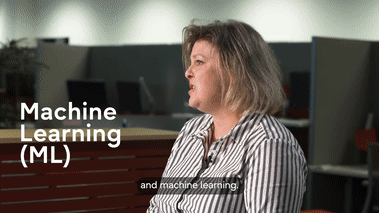Video Transcript:
Networks are under more and more pressure as the needs and expectations for connected communications get more complicated and demanding. That means providers need new ways to make their networks perform better. Not just with more capacity and higher speeds but by making them more resilient, faster to operate, easier to fix and more flexible for customers to use.
Autonomous, automated operations are intelligent operations
For most providers, making their networks perform better means applying software and compute to build intelligence and automation into every aspect of service delivery. Think of the network that’s so smart, it runs itself. That autonomous network operation is where we’re headed. And with 5G, network automation and autonomous operations are not optional. They’re essential.
If a network is going to be automated and autonomous, it’s got to have intelligence. This is why there’s so much talk in the industry about artificial intelligence and machine learning. It’s all about capturing the possibilities. AI and ML make it possible for a network to do many of the same things human technicians do. Things like:
- Using analytics and prior experience to make decisions
- Responding to signals like alarms or traffic slowdowns
- Remembering and repeating routine tasks methodically
- Anticipating future problems
- Making recommendations for improvement
Today, skilled people already do these things to maximize the value of network usage, but network intelligence makes it possible to do them without human intervention, at cloud scale, more consistently and more accurately in extremely diverse networks. And when the network is doing all these data intensive tasks for itself, skilled and expert people are free to innovate and find ways to improve customer engagement, service quality and business results. But let’s not underestimate what it will take to realize the vision of an intelligent autonomous network.
What it takes to have an intelligent autonomous network
For a start, every network and service provider is unique. That means every path to an intelligent autonomous network will be too. It will also be tough to monitor and harvest and assure huge amounts of network service and user data; data that’s generated and shared across mixed vendor networks. That would be impossible without sufficient compute resources as well as open technologies that include machine learning and AI.
Another critical challenge is how to combine and recombine all the moving parts, especially as networks are getting larger and more technologically diverse. The right solutions bring together a collection of cloud native microservices and open data transformation tools. These extend traditional network monitoring into actionable and automated network intelligence.
Using distributed data sources, global topologies and physical or virtual network element dependencies, great things are possible. Network operations and dev ops can apply microapplications to automate the network and make the communications infrastructure work harder.
In the end, at every stage of the network’s lifecycle automation and intelligence will continuously enable finely-tuned customer outcomes that deliver more to the bottom line. As you’re imagining an intelligent, autonomous network and all the possibilities ahead, I’d like to invite you to keep the open dialogue going with us.
We’re here anytime you want to learn more about options for moving forward. And we’re excited to see how the power of AI and ML will reshape and empower your network.
